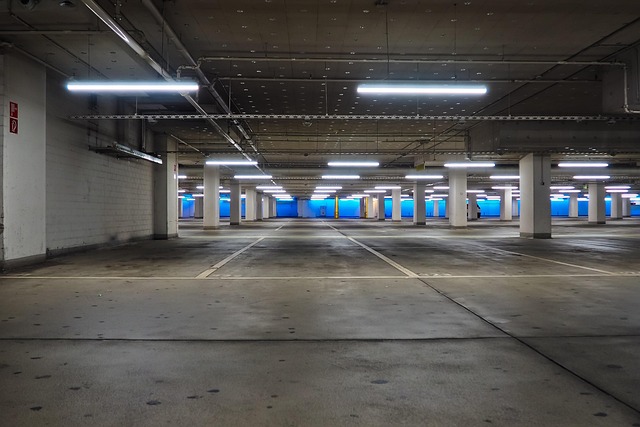In challenging terrains like dense forests or urban areas with complex underground networks, traditional utility mapping methods fail. Advanced technologies such as ground-penetrating radar (GPR), remote sensing tools, and drones with LiDAR scanners have significantly improved accuracy and efficiency. These innovative solutions enable non-invasive detection and precise visualization of underground infrastructure, crucial for safe construction projects in urban settings. Future utility mapping services will be shaped by advanced sensor systems, data analytics, autonomous vehicles, and artificial intelligence (AI), enhancing speed, accuracy, and safety in complex terrains.
In today’s world, accurately detecting utilities in challenging terrains is a complex task. From dense urban areas to rugged landscapes, traditional methods often fall short. However, advanced high-tech solutions are revolutionizing utility mapping services. This article delves into the understanding of this challenge, explores cutting-edge technologies, and highlights practical applications. We also examine future prospects, as technology continues to shape and enhance utility identification processes, ensuring safer and more efficient infrastructure management.
Understanding the Challenge: Uncovering Utilities in Difficult Terrains
In many regions, infrastructure projects face significant hurdles when it comes to identifying and locating utilities buried beneath challenging terrains. These landscapes, characterized by dense forests, rugged mountains, or urban areas with complex underground networks, pose unique difficulties for traditional utility mapping methods. Accurate detection becomes critical to avoid costly damage during construction or maintenance activities. High-tech solutions are emerging to address these challenges, offering more efficient and precise ways to map utilities in such demanding environments.
Advanced technology, such as ground-penetrating radar (GPR) and remote sensing techniques, plays a pivotal role in utility mapping services for difficult terrains. GPR, for instance, can penetrate various types of soil and rock, generating detailed images of underground structures. Remote sensing technologies, utilizing aerial or satellite imagery, help identify above-ground clues that may indicate the presence of utilities. Integrating these innovative methods allows professionals to create comprehensive maps, ensuring safe and successful infrastructure development even in the most formidable terrains.
Advanced Technology: Tools for Utility Mapping Services
Advanced technology has significantly enhanced the capabilities of utility mapping services, enabling accurate identification and visualization of underground infrastructure in even the most challenging terrains. Tools such as ground-penetrating radar (GPR) offer non-invasive means to detect pipes, cables, and other utilities by sending electromagnetic waves into the soil and analyzing the reflections. This technology is particularly useful in urban areas where construction and renovation projects frequently require precise utility mapping to avoid damaging vital services.
Additionally, remote sensing techniques, including satellite imagery and aerial photography, play a pivotal role in utility mapping services. These technologies provide high-resolution images that can be processed to identify patterns indicative of utility lines, especially when combined with geospatial data. Drones equipped with cameras and LiDAR (Light Detection and Ranging) scanners further enhance these capabilities by offering detailed, real-time data capture, making them ideal for assessing hard-to-reach areas or large-scale infrastructure projects.
Practical Applications: Real-world Use Cases of High-tech Detection Methods
In the realm of infrastructure development and maintenance, high-tech methods for detecting utilities in challenging terrains have revolutionized utility mapping services. These innovative approaches, powered by advanced technologies like LiDAR, radar, and AI-driven software, enable precise identification and mapping of underground utilities such as water pipelines, gas lines, and electric cables in dense forests, urban canyons, and other complex landscapes. By accurately pinpointing these critical assets, construction projects can be more efficiently planned and executed, reducing the risk of damage to vital services during excavation.
Real-world use cases include large-scale infrastructure renovation projects where thorough utility mapping is essential for safety and cost-effectiveness. For instance, in urban settings with limited access and dense underground networks, high-tech detection methods provide a non-invasive way to map utilities without disrupting daily life. Similarly, in remote or hazardous areas, these technologies ensure that resource extraction and development activities are conducted with minimal environmental impact and maximum safety, thereby fostering sustainable growth.
Future Prospects: The Evolving Role of Technology in Utility Identification
The future of utility identification holds immense potential with technology continuing to evolve and revolutionize this sector. High-tech methods, such as advanced sensor systems, remote sensing technologies, and data analytics, are set to transform traditional utility mapping services. These innovative tools enable more efficient, accurate, and comprehensive mapping of underground infrastructure, even in the most challenging terrains.
With the increasing demand for precision and speed, future prospects include autonomous vehicles equipped with cutting-edge sensors to detect and map utilities in real-time. Artificial intelligence (AI) will play a pivotal role in analyzing vast datasets, identifying patterns, and enhancing decision-making processes. This technology will not only streamline utility identification but also contribute to better asset management, reduced excavation risks, and more sustainable infrastructure development.
The advancement of high-tech methods for detecting utilities in challenging terrains offers a promising future for the utility mapping services industry. By leveraging cutting-edge technologies, such as remote sensing, LiDAR, and AI-driven analytics, professionals can now navigate complex landscapes with enhanced accuracy and efficiency. These innovative approaches not only streamline infrastructure management but also improve safety during construction and maintenance projects. As technology continues to evolve, we can expect even more sophisticated utility mapping solutions, ensuring better-connected communities worldwide.
